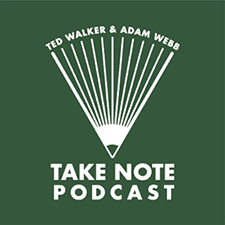Morning reading: Patricia Highsmith’s double journals
Adam writes in one notebook, using black ink for his personal diary and blue ink for fiction ideas. Patricia Highsmith kept two journals.
Frances Wilson writes in The New York Review of Books:
Writing, for Patricia Highsmith, also took a double-track mind, and she accordingly kept two journals. Two records for the two Pats: “It takes two mirrors for the correct image of oneself,” she wrote. In the first journal, which she called her notebook or cahier and began at the age of seventeen, she looked forward, mapping out her literary terrain and recording aphorisms, plots, and germs for her fiction such as: “Able to think creatively only in the unconcious [sic], losing the thread when I realize I am following a thread.” Highsmith’s cahiers might be described as the conscious brain preparing the unconscious brain for action, because creative freedom flows, she believed, from the id and not the ego. She also stored here her thoughts on sexuality and gender, referred to as NOEPS (“notes on an ever-present subject”).
The second journal, begun when she was twenty and continued, like the cahiers, all her life, was a confessional diary in which Highsmith looked backward, digging down to “the bottom of myself” as though performing her own open-heart surgery. Here the unconscious brain found its way into consciousness: “Shame on Eva,” Highsmith wrote of her analyst, “for taking away my fantasies about having a male penis.” While the cahiers were written in English, the diaries were composed, until 1952, in a combination of English and imperfect German, French, Spanish, and Italian.


